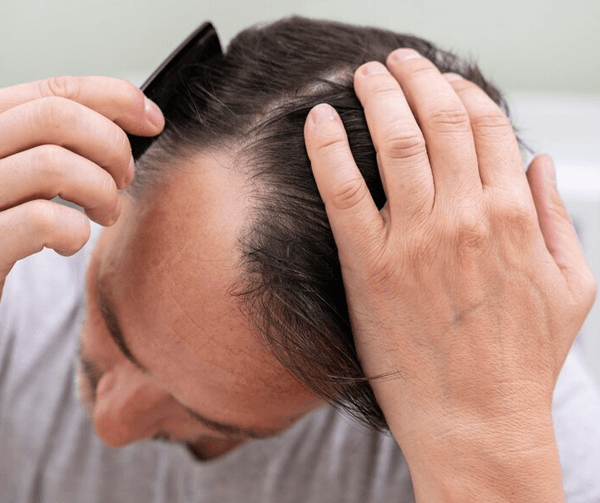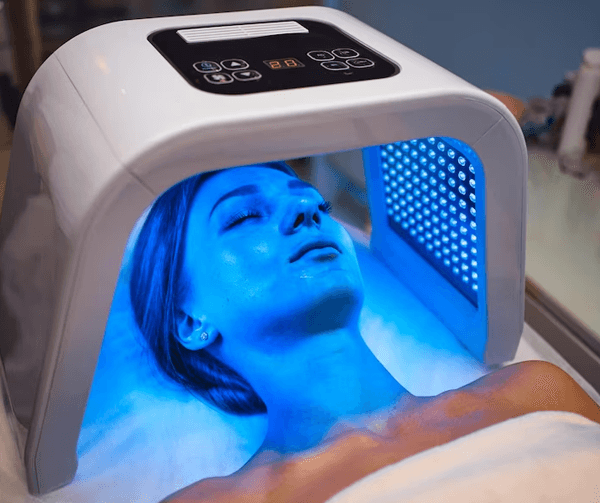The premise behind a chemical peel is that certain carefully formulated chemical solutions are applied to the skin, and these actually help remove the outer layer of skin, which is often damaged. Normally, the chemicals that are used include alpha-hydroxy acid, beta-hydroxy acid, phenol acid and trichloroacetic acid. The skin of each person is different, which is why the constitution of this chemical solution will also be different. A professional and experienced cosmetologist or dermatologist will know about the same and ensure that the chemical solution is prepared in accordance.
There are three types of chemical peels and only an experienced doctor will be able to gauge, which will work the best for you. The types include:
Light chemical peel –
In this type of chemical peel, the improvements are very subtle in the beginning, but as the skin is subjected is to more number of treatments, the glow will become more apparent.
Medium chemical peel –
By the end of the first procedure, your skin will start to look smoother and younger looking.
Deep chemical peel –
The results are truly dramatic and the effects can be seen immediately. However, the time taken for recovery is also the longest.
Now let’s look at each type of chemical peel in detail:
Light Chemical Peel:
What is it- This is the ideal choice for someone who has uneven pigmentation, trouble with acne, fine lines or dryness? The chemical solution will remove only the outer layer of the skin, leading to a healthy glow in the skin. Normally, the chemicals used for this type of peel include a combination of alphahydroxy and beta hydroxyl acids. Multiple sessions might be required for the best results.
What are the steps involved
The face will be thoroughly cleaned.
The chemical solution, which will have been formulated beforehand, will be brushed onto the skin and allowed to work.
There might be a light tingling sensation.
The solution will then be washed off.
What are the possible risks
There could be some redness, itching or irritation.
There could hyper pigmentation
Normally, the side effects tend to reduce with repeated sessions and your doctor will suggest that you use a sunscreen, every time you step out of the house.
Medium Chemical Peel:
What is it- A medium chemical peel can be used to treat scars caused by acne, deep wrinkles and even uneven skin colour? The chemical solution that will be formulated will remove the epidermis, as well as a small part of the dermis. The chemicals used will include trichloroacetic acid and glycolic acid.
What are the steps involved:
The face will be cleaned with care.
The chemical solution which will have been prepared beforehand will be brushed gently all over the skin. There could be a little burning or itching sensation, which is normal.
There is a chance that the area that has been treated turns slightly whitish or grey.
A saline compress will be used to neutralise the effects of the chemicals.
The skin might turn red or even brown in the succeeding days and it could take close to a month for the skin to become normal.
What are the possible risks:
There will be some redness, crusting of the skin and stinging.
There might not be a bleaching effect, but there could be some colour changes.
Sun protection will be essential in the days to come.
There is a risk of scarring.
The redness could last for a few months.
There could be hyper pigmentation and brown blotches.
As is the case with a light chemical peel, with a medium peel too, you need to make sure that you use sunscreen, every time you step out of the house.
Deep Chemical Peel:
What is it- This is a procedure that is used for people with deep facial lines. The same process can be used to treat skin that has been damaged by over exposure to the sun and even growths that could be pre-cancerous. Strong chemicals such as phenol will be used to allow penetration into the deepest layers of the dermis. There is a chance that your doctor will give you local anaesthesia or a sedative to ensure there is no discomfort. Generally, there is some kind of pre-treatment a few weeks, leading to the actual chemical peel. This is done to prepare the skin for the peel, allowing the chemicals to penetrate the skin properly and ensure that the healing process is fast.
What are the steps involved:
You will be given a sedative or anaesthetic or both to ensure that there is no discomfort.
Your face will be cleansed properly.
The chemical or chemical solution will be applied to the face.
The same will be neutralised with sterilised water.
The skin will be layered with a thick ointment, which will help prevent dryness and discomfort.
The ointment will have to be left untouched, which is why thin strips of gauze might be applied.
What are the possible risks:
There is a possibility of the skin lightening permanently.
The skin might lose its ability to create new pigments.
The need to protect the skin against sun will become crucial.
What is the recovery:
The recovery time is higher for deep chemical peels.
Returning to the normal routine might take longer.
Wearing makeup might not be possible for at least two weeks.
There could be crusting of the skin, redness, itching and swelling.
Normally, the doctor will provide painkillers for sometime after the procedure and the skin should start returning to normal in about two weeks’ time. Studies have shown that the results of a deep chemical peel can last for up to a decade!







